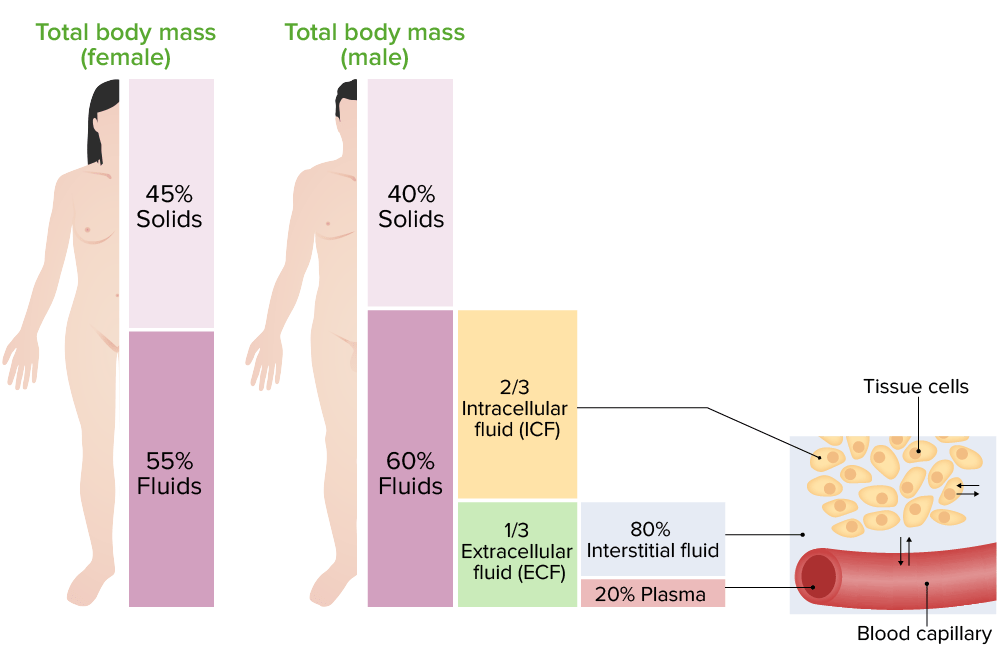Care of Client With Fluids and Electrolytes Imbalance (Process of Movement Across The Membranes)
3. FLUID MOVEMENT BETWEEN EXTRACELLULAR AND INTRACELLULAR FLUID
3.3. How are fluids distributed intracellularly and extracellularly?

Intracellular and extracellular fluids are separated into compartments by semipermeable membranes, and the transport of fluid and ions is maintained by changes.
Water can move freely across the membrane and is directed by the osmotic gradient between the two spaces. Changes in the intracellular fluid volume result from alterations in the osmolarity of the ECF but do not respond to isosmotic changes in extracellular volume Channels in the cell membrane.
Water move between the intracellular and extracellular fluid compartments. When the osmolarity in the ECF rises compared to ICF, water moves by osmosis from the ICF into the ECF
What determines the direction of water movement between fluid compartments?
At the arterial end of a vessel, the hydrostatic pressure is greater than the osmotic pressure, so the net movement favors water and other solutes being passed into the tissue fluid.
At the venous end, the osmotic pressure is greater, so the net movement favors substances being passed back into the capillary. This difference is created by the direction of the flow of blood and the imbalance in solutes created by the net movement of water that favors the tissue fluid.
The kidneys, in concert with neural and endocrine input, regulate the volume and osmolality of the extracellular fluid by altering the amount of sodium and water excreted
A state of balance among all the body systems needed for the body to survive and function correctly. In homeostasis, body levels of acid, blood pressure, blood sugar, electrolytes, energy, hormones, oxygen, proteins, and temperature are constantly adjusted to respond to changes inside and outside the body, to keep them at a normal level.
Within the extracellular fluid, the major cation is sodium and the major anion is chloride. The major cation in the intracellular fluid is potassium. These electrolytes play an important role in maintaining homeostasis.
The main function of intracellular fluid is to help with the transport of gases, nutrients, and other molecules. Intracellular fluid is also important for intracellular communication and cell signaling. Extracellular fluid is found in blood plasma and in the interstitial space between cells.